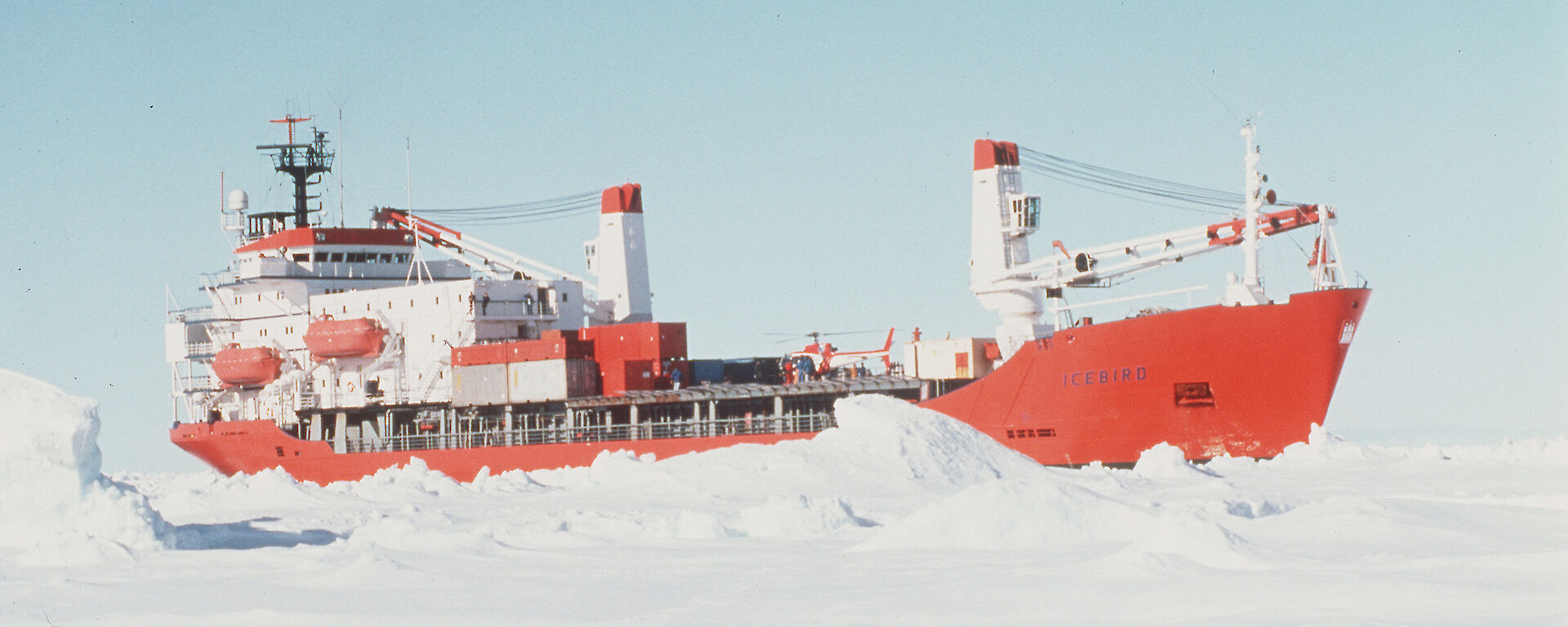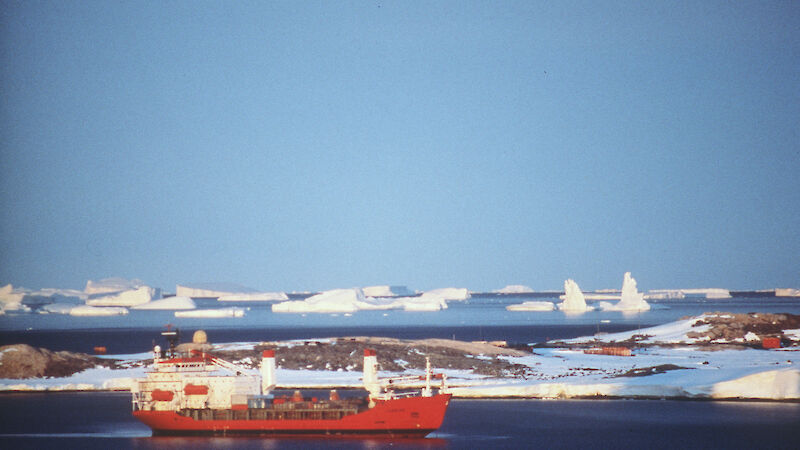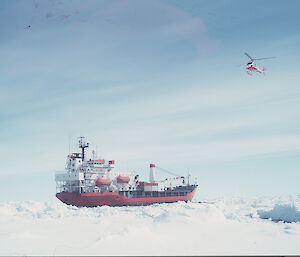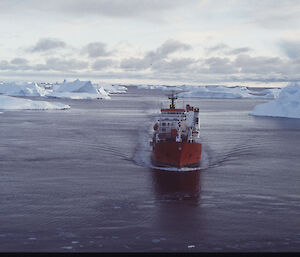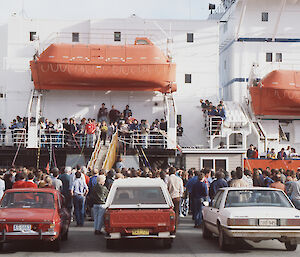Specifications
- Motor Vessel (MV)
- Ice class: Arc 1 / E4 (forepart Arc 2) icebreaker
- Installed power: MAK 5,400 horsepower (4,000 kilowatts)
- capacity with module: 4,378 tons
- capacity without module: 6,436 tons
- length: 106.6 metres
- breadth: 19.9 metres
- speed: 14.7 knots
- 98 passengers in module accommodation; 22 crew
The Icebird’s bow was constructed to the latest ice-breaking design. Its owners designed the ship to break one year old ice with continuous speed, and avoid the constant threat to Antarctic shipping: besetment. Special features that enabled ANARE to unload cargo in remote areas included a strengthened helideck, ‘tween-deck hatch covers that doubled as pontoons, and an ice-strengthened pusher barge.
Key Antarctic voyages
The Icebird was fitted with a detachable accommodation module to carry passengers. It was clamped to the ship in front of the bridge, and secured with bolts.
In late 1984, on the ship’s first voyage, the accommodation module started shifting from side to side in heavy seas. Passengers became increasingly worried, and the securing bolts were tightened by the crew. Heinrich Brand, the manager of the shipyard company, visited Australia to reassure ANARE staff. He was on board the voyage departing Hobart in January 1985. On the first night, the Icebird rolled heavily causing the module to move five centimetres with a loud clunk, terrifying the passengers. Captain Ewald Brune, not convinced of the safety of the construction, recalled:
Within about 60 seconds I had 90 expeditioners on the bridge, saying that the module had moved – you could really feel it shaking! I saw on the bridge a very pale Mr Brand. I said, ‘Mr Brand, no matter what your construction company is telling me, the module is no longer a part of this ship – it is deck cargo. And deck cargo must be lashed!' – Interview with Ewald Brune & Tim Bowden, ANARE Jubilee Project, 13 July 1995.
Captain Brune ordered his crew to secure the module with 200 chains. Before the next voyage, the module was welded into place. This memorable event was recorded in ANARE history with the song, 'Click go the bolts!'
Later life
During the 1995–1996 season, ANARE’s primary charter, the RSV Aurora Australis, was out of service for a month with mechanical problems. A replacement ship was needed – the Icebird! Renamed the MV Polar Bird in 1996 by its new Norwegian owners, the ship was occasionally chartered by ANARE to support operations alongside the Aurora Australis until 2003.
In 2003, the Polar Bird was sold for general cargo service, and renamed the Almog.

